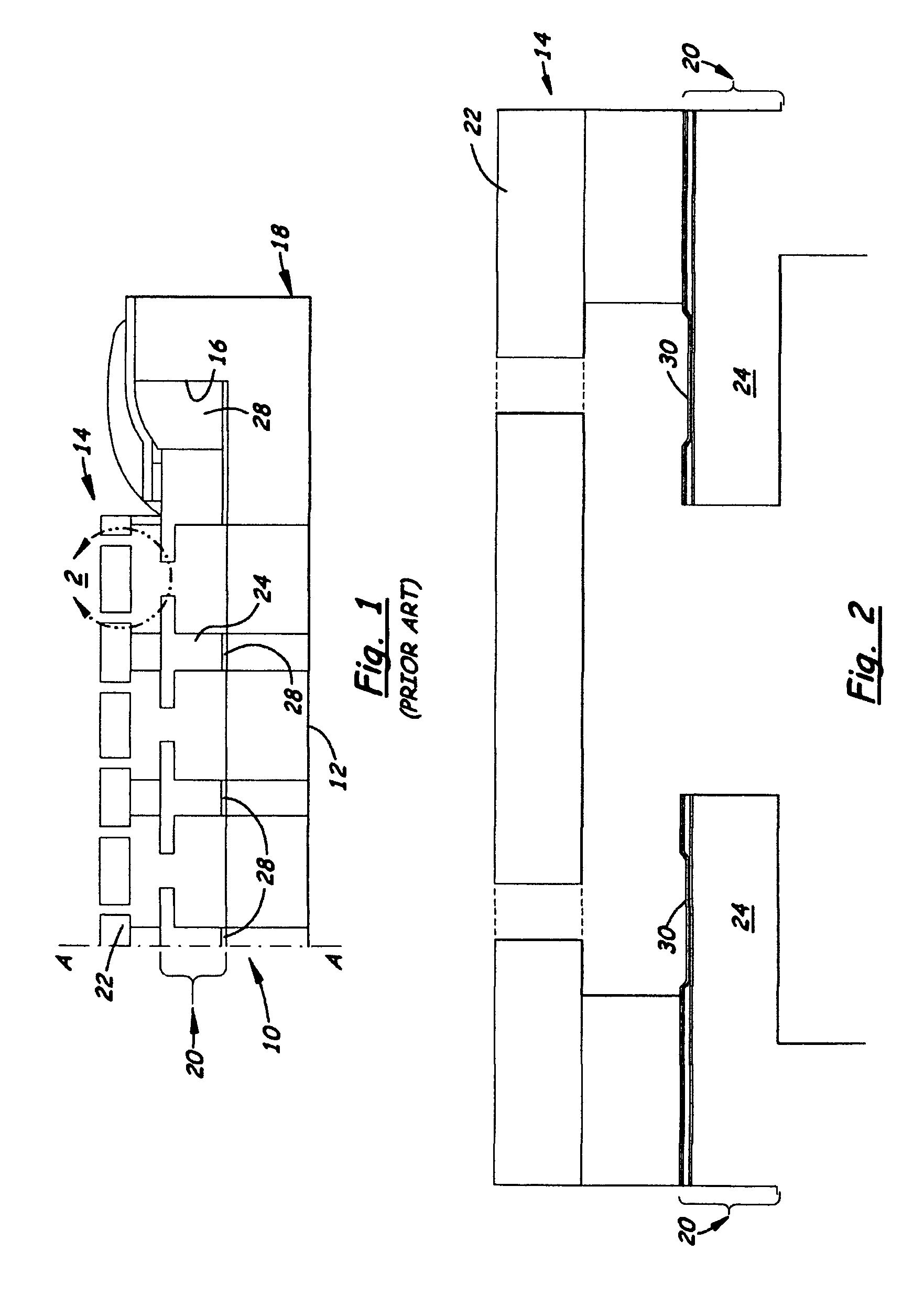Heater chips with silicon die bonded on silicon substrate and methods of fabricating the heater chips
a technology of heater chips and silicon substrates, applied in metal-working devices, printing, writing implements, etc., can solve the problems of long-term corrosion problems, limited printing quality, and less than simple manufacturing, and achieve the effect of low cost and precis
- Summary
- Abstract
- Description
- Claims
- Application Information
AI Technical Summary
Benefits of technology
Problems solved by technology
Method used
Image
Examples
Embodiment Construction
[0035]The present invention now will be described more fully hereinafter with reference to the accompanying drawings, in which some, but not all, embodiments of the invention are shown. Indeed, the invention may be embodied in many different forms and should not be construed as limited to the embodiments set forth herein; rather, these embodiments are provided so that this disclosure will satisfy applicable legal requirements. Like numerals refer to like, comparable or corresponding elements throughout the views.
[0036]Also, it should be understood that the invention applies to any micro-fluid ejection device, not just to thermal inkjet heater chips. While the embodiments of the invention will be described in terms of a thermal inkjet printhead, one of ordinary skill will recognize that the invention can be applied to any micro-fluid ejection system.
[0037]Further, it should be understood that many of the embodiments of the invention employ low temperature bonding technology which is ...
PUM
| Property | Measurement | Unit |
|---|---|---|
| thick | aaaaa | aaaaa |
| thickness | aaaaa | aaaaa |
| thickness | aaaaa | aaaaa |
Abstract
Description
Claims
Application Information
 Login to View More
Login to View More - R&D
- Intellectual Property
- Life Sciences
- Materials
- Tech Scout
- Unparalleled Data Quality
- Higher Quality Content
- 60% Fewer Hallucinations
Browse by: Latest US Patents, China's latest patents, Technical Efficacy Thesaurus, Application Domain, Technology Topic, Popular Technical Reports.
© 2025 PatSnap. All rights reserved.Legal|Privacy policy|Modern Slavery Act Transparency Statement|Sitemap|About US| Contact US: help@patsnap.com



